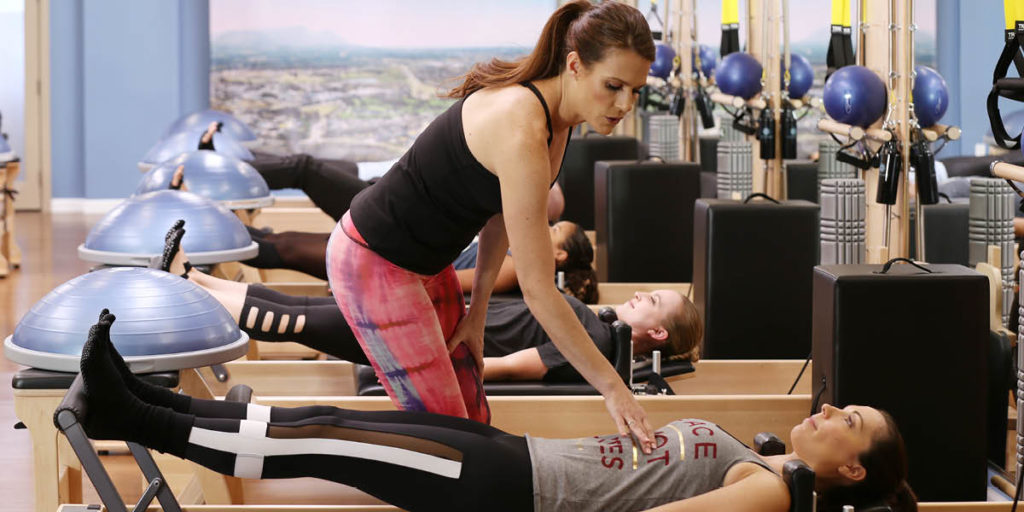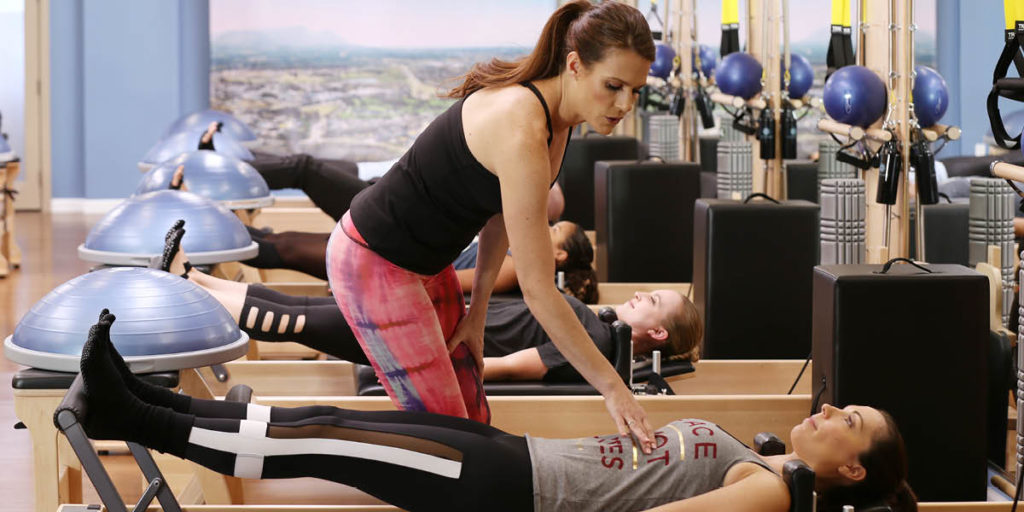During Pilates practice, proper form is a topic of hot discussion. What does “proper form” really mean, though? There are core Pilates principles that enforce keeping the spine in alignment. One important principle that affects form is ribcage stability.
The ribcage is named for its function – a cage that helps surround and protect what's inside of it, including vital organs such as the heart and lungs.
How do you properly keep your ribs in place? Think of the ribcage as an umbrella. When you inhale, that umbrella expands, opening in all directions. As you exhale, it closes, re-wrapping around your torso from all sides. When you breathe fully in this fashion, you are activating abdominals, the diaphragm, lats, and the abdominal wall, along with deeper muscles around the ribs and spine themselves. Overall, proper ribcage stability promotes proper muscle activation.
A proper ribcage form can be challenged by common errors. Shallow breathing is a major factor. When you don't allow yourself to deeply breathe, you’re not fully using the back and sides of the ribs in that umbrella fashion. Shallow, limited breathing decreases the mobility of the spine and impacts your overall capacity for both movement and breath. Remember to fully engage these underused areas to execute your daily motions correctly!
Another common mistake is “popping” the ribs when in motion. This happens when you don't fully use breathing to stabilize your ribcage, and as a result, abdominal engagement is lost. Every time this happens, unwarranted stress is created in the low- to mid-back. Over time, this stress creates imbalances, pain and other conditions.
When you perform correct ribcage stability, your body reaps the benefits.
The abdominals and deep spinal muscles gain strength to help us carry heavy loads. It also improves your posture overall, keeping you mobile and decompressed. You may notice that you experience less stress less when fully taking advantage of the breath in these areas. In addition, engaging in deep breathing will help protect and alleviate pain, stress, and imbalances in surrounding areas such as the shoulders, upper back, low back, and hips.
Creating awareness around how the ribs move during Pilates can help the overall conditioning, mobility and health of your spine and surrounding joints and muscles. Preventing errors prevents aches and pain, leading you to a less stressful workout and life as a whole!
| Try a FREE Intro Class! |



.jpeg?width=600&name=IMG_0109%20(1).jpeg)
